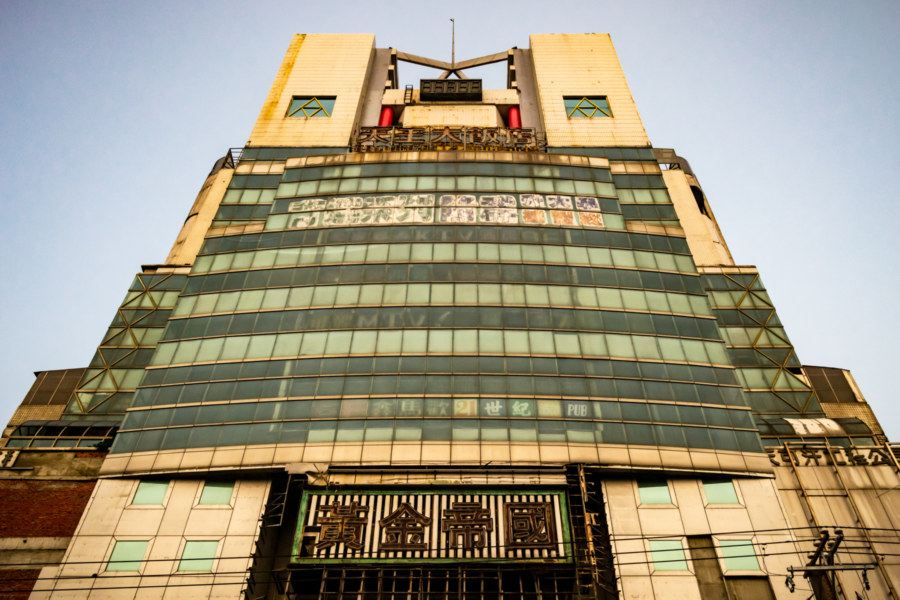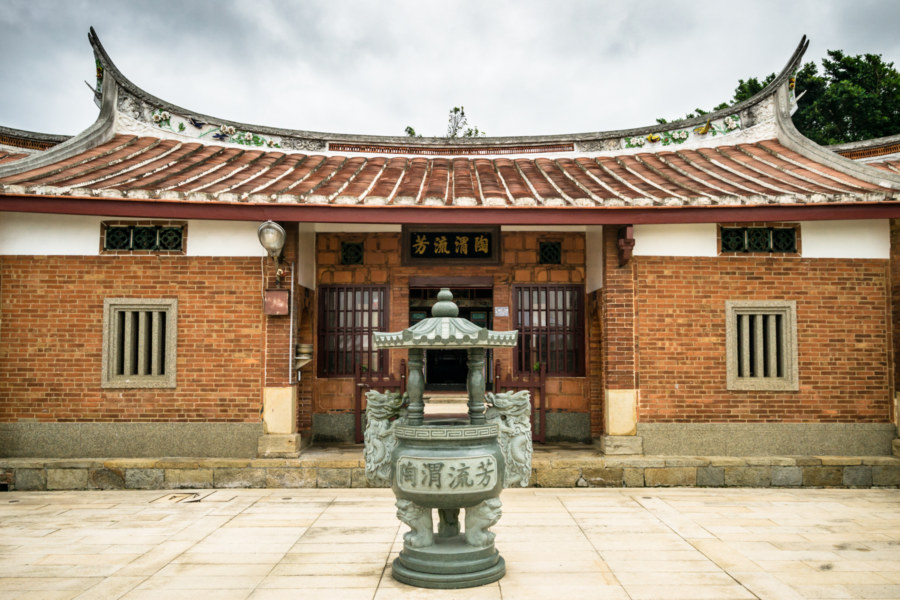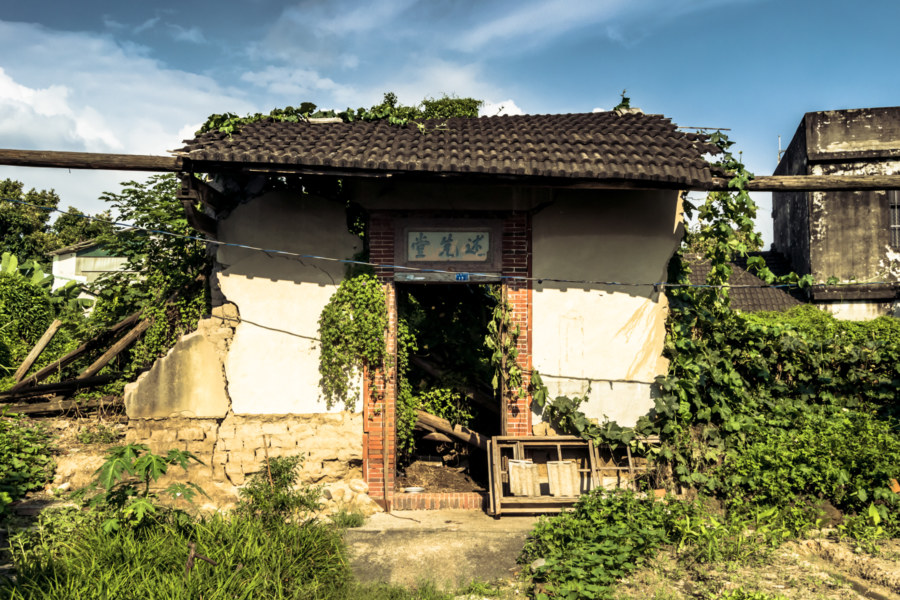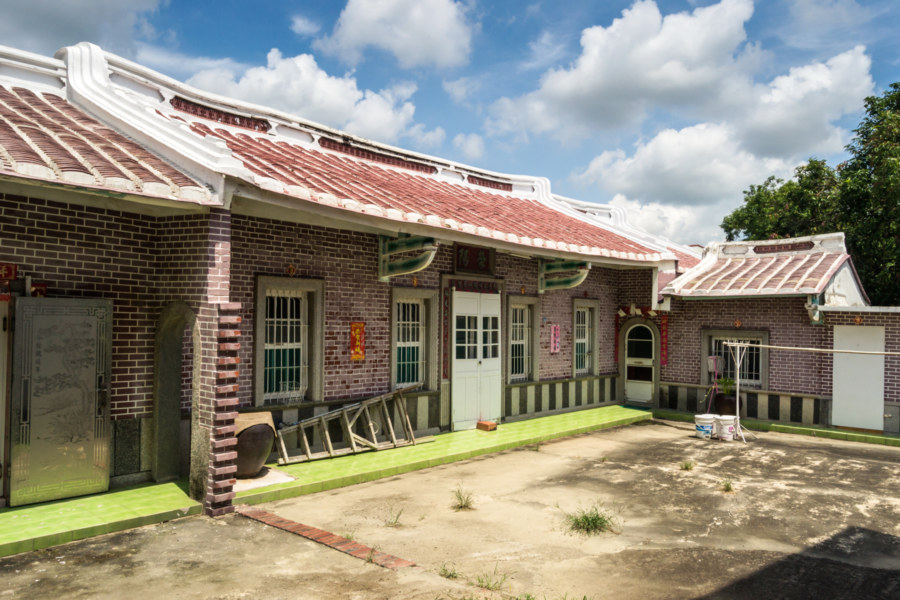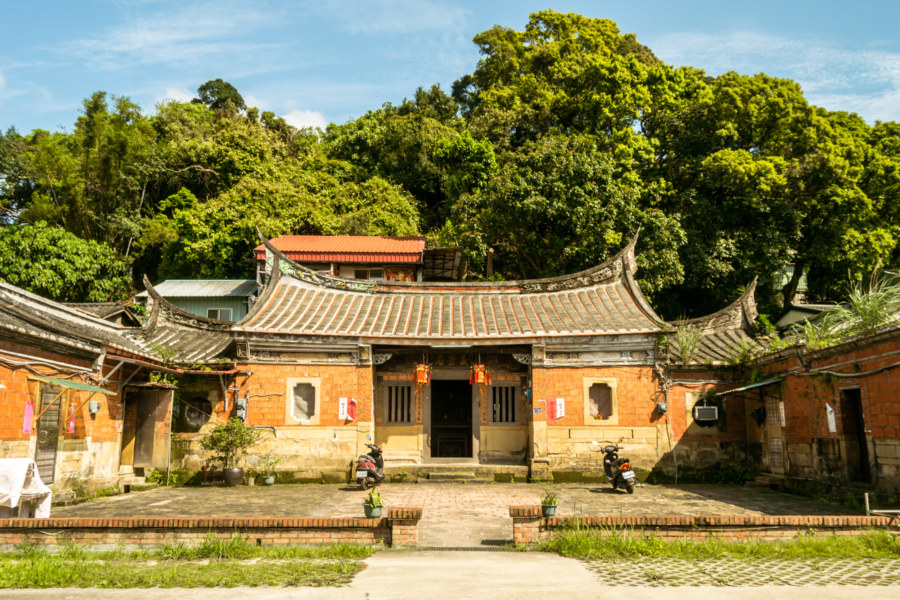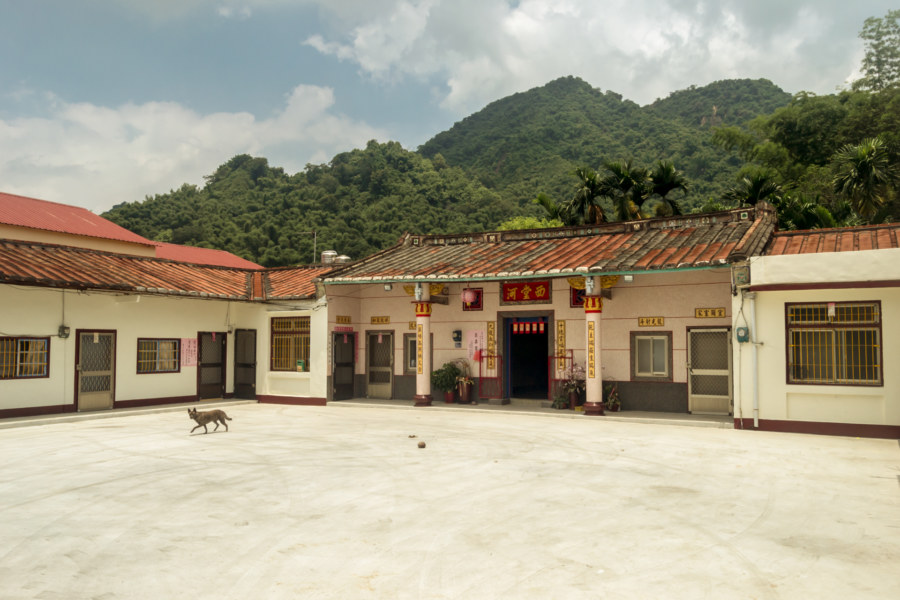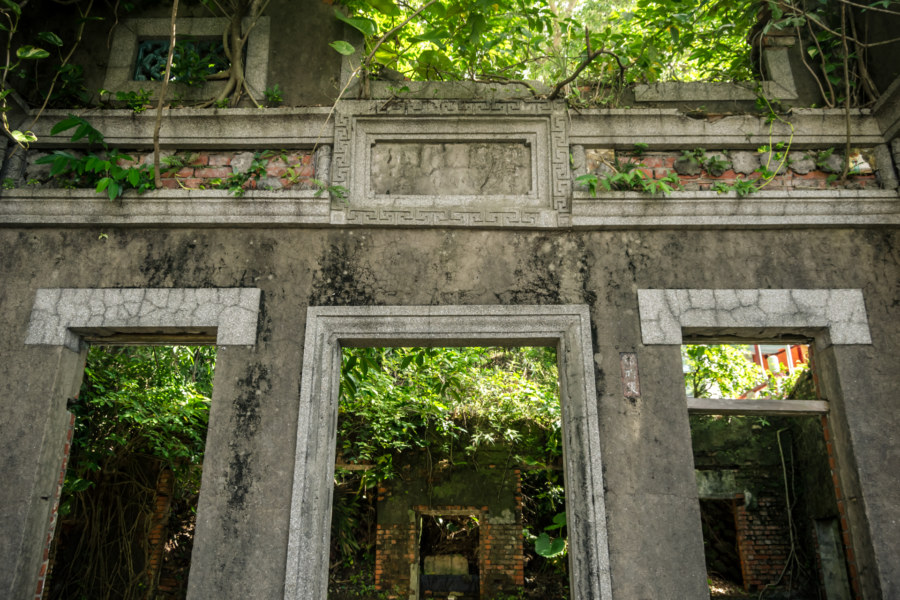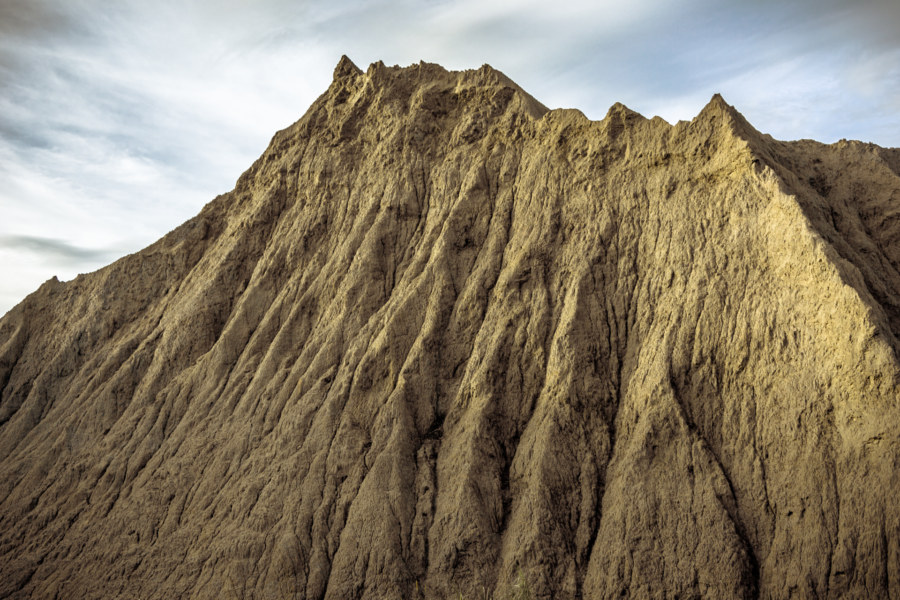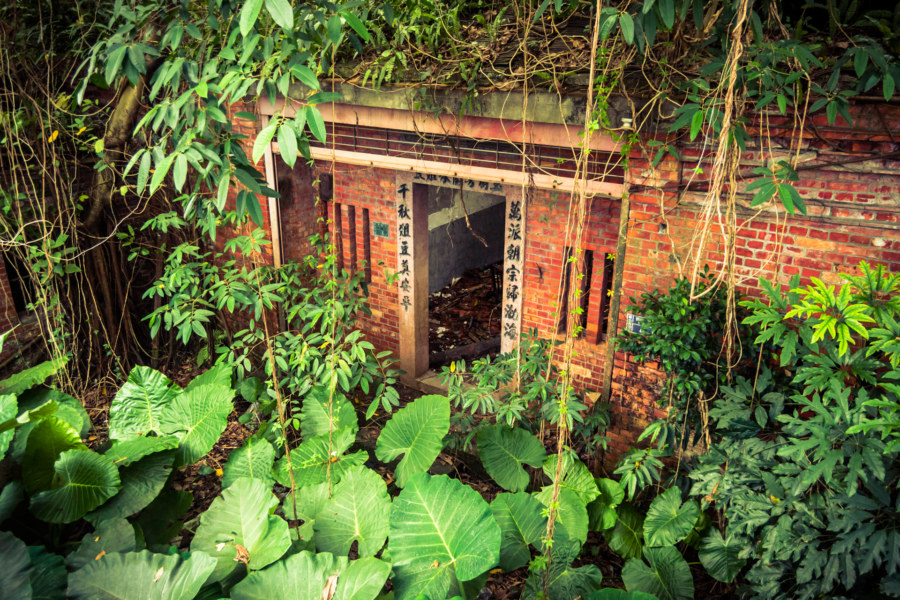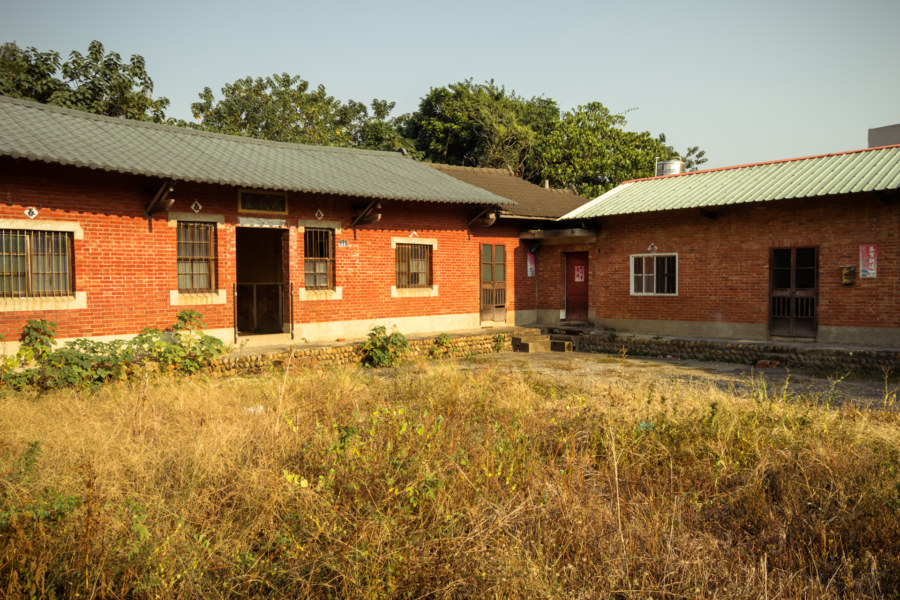Yuanlin is a modest settlement of approximately 125,000 residents located on the Changhua Plain (彰化平原) in eastern Changhua, Taiwan. It was formerly the most populous urban township in the nation, but Yuanlin was upgraded to a county-controlled city in 2015, second only to the administrative capital, Changhua City. Considerable work has been done in recent years to improve the urban environment of Yuanlin, and it feels like one of the few places between Taichung and Tainan that isn’t falling into disrepair and emptying out. That being said, urban decay remains widespread in Yuanlin, and there are many interesting ruins worth exploring before they disappear. For students of city planning and development this compact city also has quite a lot to offer—and in this post I aim to introduce some of its more intriguing features, mainly drawing upon photographs from 2013 to 2015, when I was spending significant amounts of time in the area.
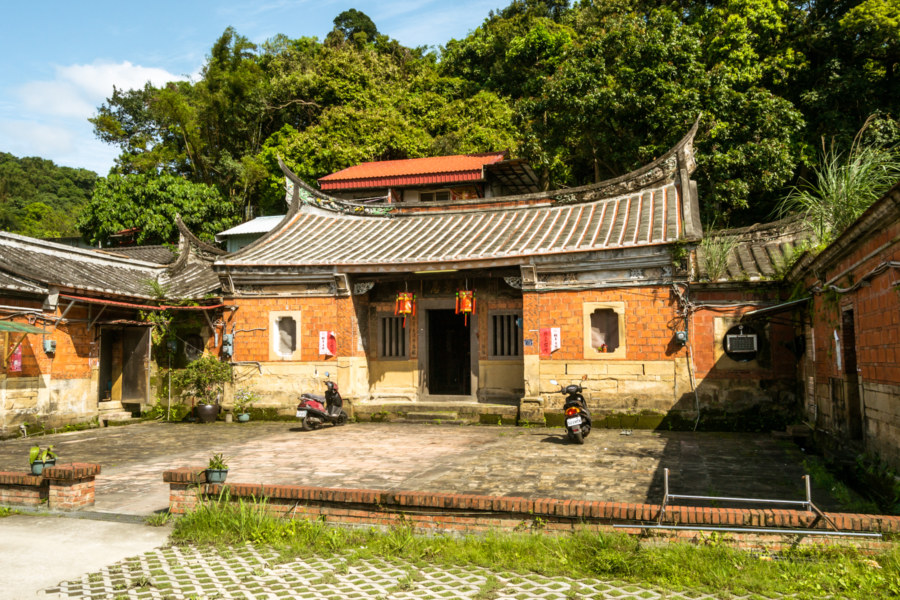
Sānhéyuàn (三合院) are the traditional U-shaped courtyard homes of Taiwan. They are a common sight in the countryside but can also be seen in older, more historic parts of urban centers around the nation. Many of these traditional homes are neglected and in disrepair despite their sentimental value. See also: residential, Qing dynasty era.
Fanjiang Ancestral Hall 范姜祖堂
I chanced upon Fanjiang Ancestral Hall 范姜祖堂 while out for a bicycle ride around Taoyuan in late October 2015. That morning I set out from my place in Zhongli to see more of the countryside and eventually pay a visit to Fugang Old Street 富岡老街 in western Yangmei. Along the way I made a brief diversion into Xinwu to see whatever might be found there—and this cluster of historic Hakka homes were my reward.
Shuidui Settlement 水碓聚落
Taichung is undergoing a massive transformation as vast tracts of rural-industrial sprawl are cleared to make way for new developments around the high-speed rail station 高鐵台中站 and the future Taichung Metro system, particularly in Beitun, Nantun, and Wuri. Google’s satellite maps are out of sync with the streets, many of which are so new that they appear only as ghostly lines coursing through the former rice paddies. With large parts of the urban periphery slated for wholesale demolition and renewal many grassroots organizations have formed to preserve cultural assets found in these doomed territories—as was the case with the Shuinan Tobacco Barn 水湳菸樓. Today I chanced upon another example: Shuǐduì Jùluò 水碓聚落, a rare 17th century Hakka settlement in Nantun with an ambiguous future.
Southern Taiwan Ride 2015: Tainan to Pingtung City
Bicycle touring is one of the best ways to experience Taiwan. I don’t have an opportunity to go touring as much as I’d like but managed to find some time last year, in June of 2015, to embark upon a multi-day bicycle trip around southern Taiwan. My intention was to cover some of the same territory that I had rushed through on my first bicycle trip down south in 2013. I ended up racing a typhoon from Kenting to Taitung City that year—so the chance to explore the backroads of Pingtung at a more relaxed pace really appealed to me. I started my journey in Tainan, my favourite city in Taiwan, and cycled through Kaohsiung to Pingtung City, putting about 70 kilometers behind me. Gathered here are some photos from the first day of this trip, continued here.
Yifang Old House 義芳居古厝
Yìfāng Old House (義芳居古厝) is a traditional courtyard home, or sānhéyuàn (三合院), in the scenic foothills of southeastern Da’an, Taipei. It was built in 1876 during the Qing dynasty era by a wealthy branch of the Chen family. At that time it was far from the commercial centers of Wanhua and Dadaocheng, both near the other side of Taipei Basin, on an almost lawless frontier. Nowadays this old house is a stone’s throw away from some of the busiest streets in the city as it is located immediately behind the National Taiwan University (國立臺灣大學) campus, better known as Táidà (台大).
Postcards From Meinong 美濃明信片
I briefly visited Meinong in July of 2014 while cycling around southern Taiwan. I hadn’t done any planning prior to arrival and knew nothing of what I was getting myself into nor what sights I should have made an effort to see. I was navigating almost exclusively by instinct, riding in whatever direction seemed interesting, simply to see what was there. Gathered here are several of my photos from a few uninformed hours in this bucolic rural township in Kaohsiung.
Khoo Tsu-song Old House 許梓桑古厝
Khóo Tsú-song Old House 許梓桑古厝 is a scenic historic site atop a modest hill near Miaokou Night Market 廟口夜市 in Keelung. Built in 1931 while Taiwan was under Japanese rule, it is structured somewhat like a traditional Taiwanese three-sided courtyard home with some Western influences and building materials. Formally named Qìngyú Hall 慶餘堂, it was the residence of Khóo Tsú-song (1874–1945), an important figure in local politics and civic affairs during the Japanese colonial era. His name is rendered here in romanized Taiwanese Hokkien, in keeping with the conventions adopted by the Keelung cultural bureau.
Exploring the Badlands of Southern Taiwan
The badlands of Taiwan are one of the nation’s most captivating and unusual landscapes. While there are several scattered around the country the most extensive badlands can be found along the hilly borderlands of Tainan and Kaohsiung. Known locally to Taiwanese as “moon worlds” (yuèshìjiè 月世界), these landscapes are composed of weathered mudstone outcrops that erode too quickly for plants to grow.
Xindian Old House 新店老屋
Not long after moving to Wenshan in Taipei I went out riding to explore the neighbourhood. At some point I found myself on the opposite side of Jingmei River from where I was living at the time. Nestled into a bend in the river, this small nub of land was home to several factories, office buildings, and hotels that looked like they probably charged by the hour. There were almost no homes whatsoever—which seemed rather strange for that part of the city—but as I cycled along a Bǎoqiáo Road (寶橋路) laneway I noticed a traditional home hidden in the foliage to one side and stopped to investigate.
A Traditional Home in Dacun 大村三合院
Today I would like to take you inside an abandoned sānhéyuàn (三合院), a traditional Taiwanese courtyard home. This particular home is in Dacun, a rural township in Changhua, but it is not unique. The Taiwanese countryside is littered with tens of thousands of these old homes, many of which have fallen into disrepair and abandonment over the years. I have given this place a name but it is merely a description of convenience. Chances are it has no formal name.
